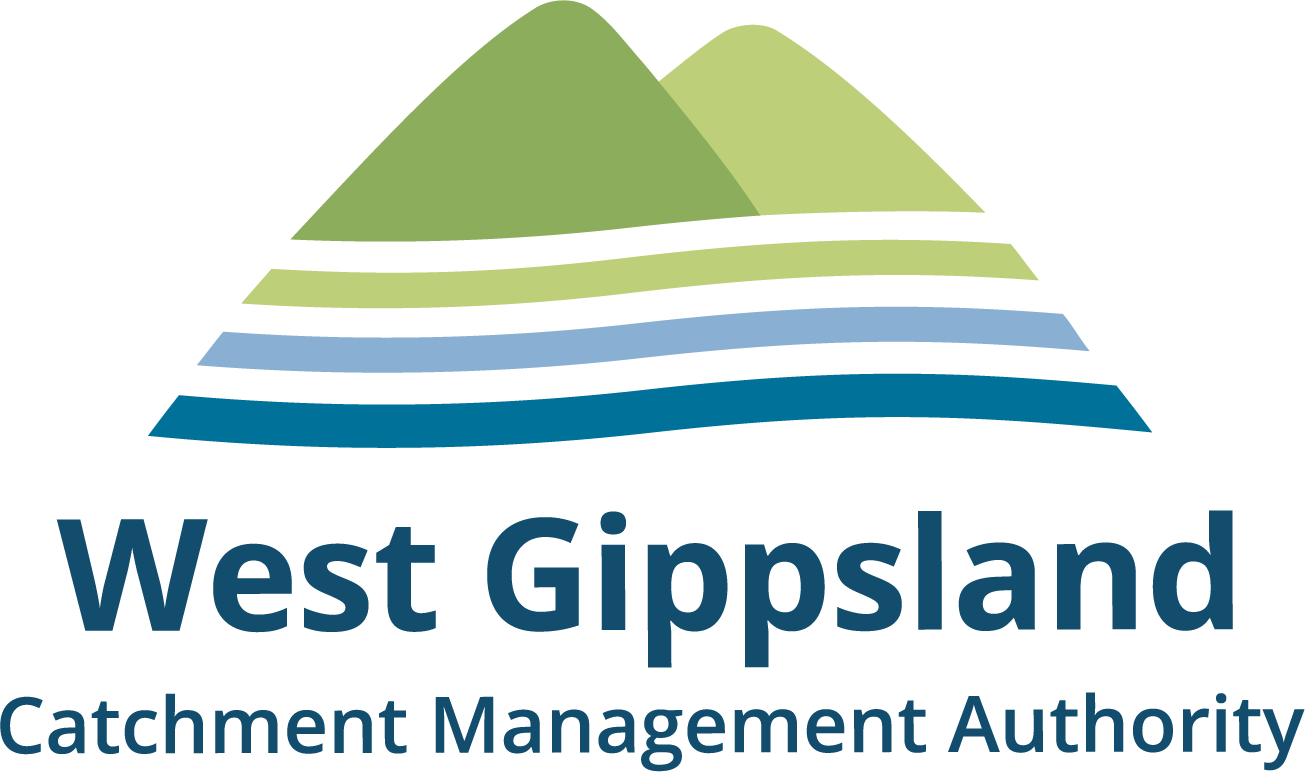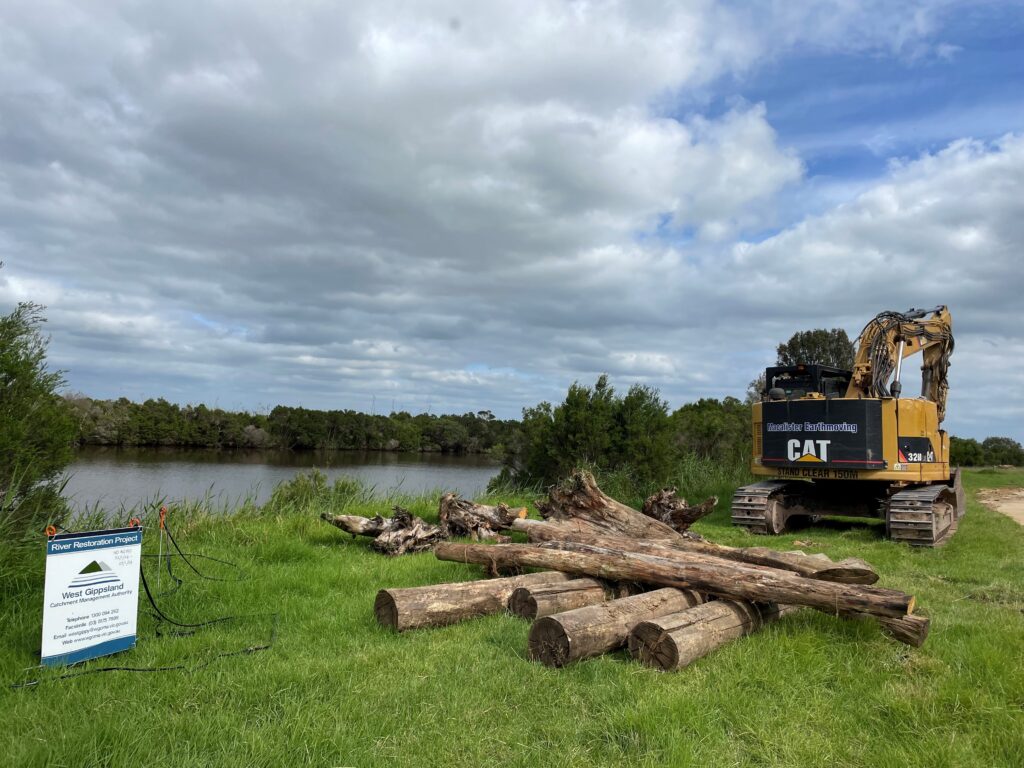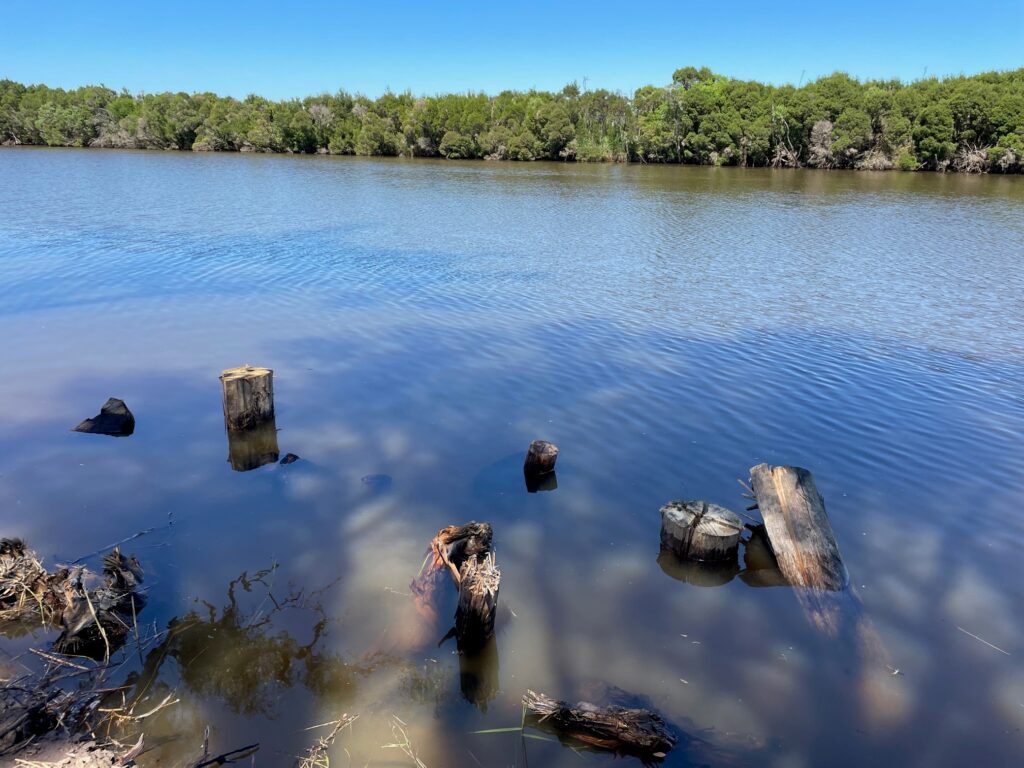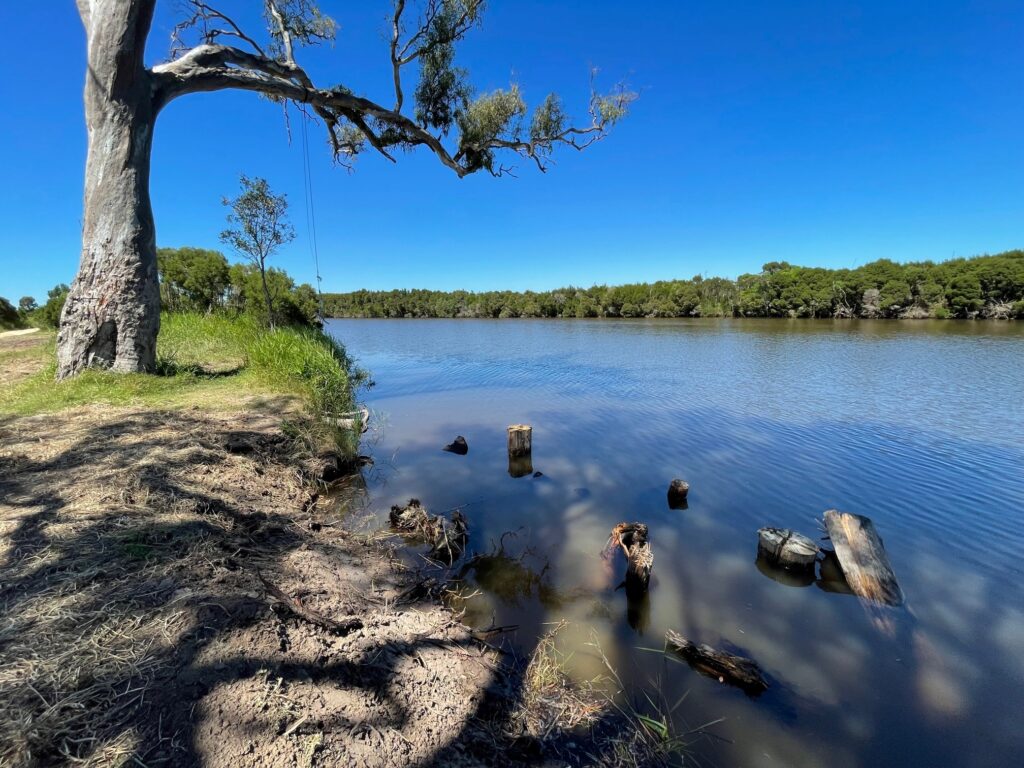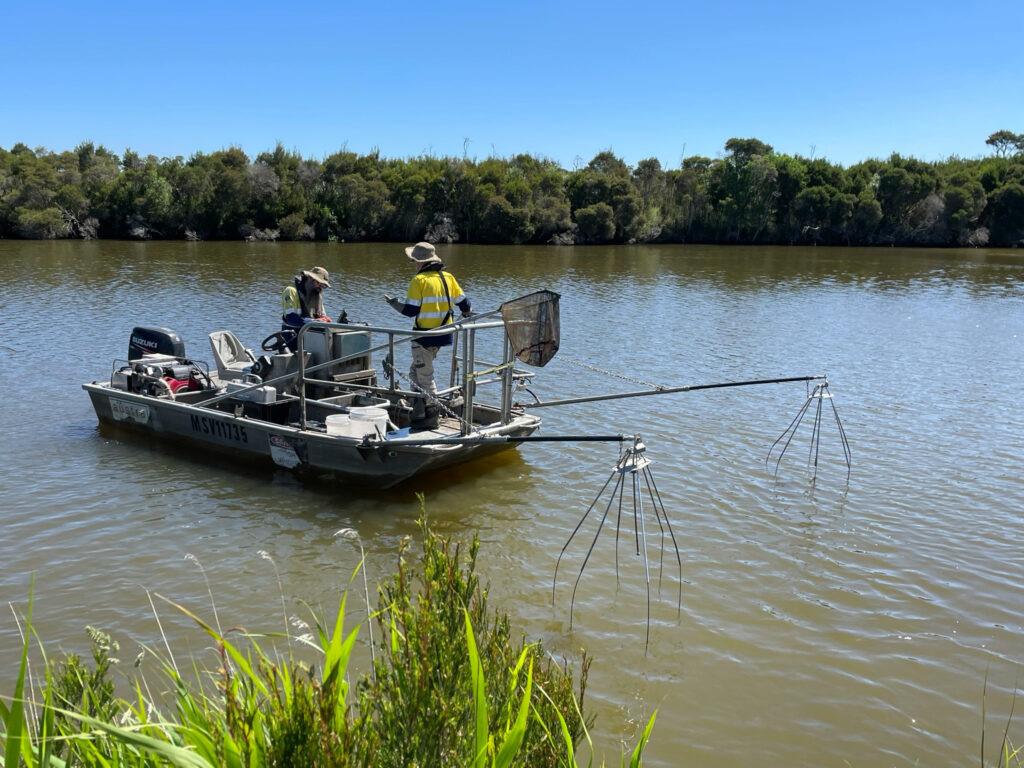Creating better homes for fish in Lower Avon river
West Gippsland Catchment Management Authority (CMA) has completed a project on the lower Avon River on Gunaikurnai Country to understand resident fish populations, create more habitat for them to thrive and improve facilities for fishers and river users.
The project included fish surveys, adding woody habitat into the river, repairing fishing platforms and planting native trees and is part of the Love Our Lakes program of works made up of 48 projects, being delivered by 22 partners to protect and enhance the health of the Gippsland Lakes.
“The lower Avon River is becoming increasingly popular with recreational fishers,” said Martin Fuller, CEO of West Gippsland CMA.
“However, it was lacking woody habitat to support good healthy populations of fish, so we saw an opportunity to create additional instream habitat that will ultimately lead to better conditions for native fish to thrive.”
“This project not only benefits fish and the Gippsland Lakes environment – fishers and recreational users are winners as well with improvements to existing fishing platforms that are well utilised by anglers.”
To be able to measure the success of the project, West Gippsland CMA started by engaging researchers to undertake fish surveys using various methods including electro fishing. The surveys recorded Estuary Perch, Australian Bass, Bully Mullet and Flathead Gudgeon.
Next, hardwood logs were installed and pinned by vertical piles that were strategically designed to maximise habitat area and mimic the complexity and form of natural river snags.
Not just any logs, the timber was sourced from large trees that had fallen during extreme wind and flood events, and collected by Emergency Recovery Victoria.
“This is a great example of how two government organisations can work in partnership for good environmental outcomes,” said Martin.
Once the habitat was installed, the team turned their attention to repairing the fishing platforms and native trees provided the finishing touches to the site.
A second fish survey was conducted after the instream structural habitat was installed which showed the fish using their new habitat for feeding and shelter.
“Projects in this western most area of the Gippsland Lakes are aimed to improve Lake Wellington and its fringing wetlands,” said Elsa Burnell, Project Delivery Co-ordinator for West Gippsland CMA, who oversaw the project.
“The estuary is a beautiful interface between the Gippsland Lakes and the river systems. These unique inland estuaries can be very fresh in wet years and almost as salty as sea water in dry times. The animals and plants that live there are incredibly resilient – and these works support them to thrive.”
“These works will enhance not only the habitat values of the system but support recreational use and enjoyment of the area. Every time you go down there you see people camping, fishing and kayaking and connecting with the Lakes and rivers of this special place.”
This project is part of a $248 million investment by the Victorian Government to improve the health of waterways and catchments. Of this, $7.5 million is being provided to improve the health of Gippsland Lakes over three years (2021-2024), through delivery of on-ground works and community engagement which is overseen by the Gippsland Lakes Coordinating Committee.
